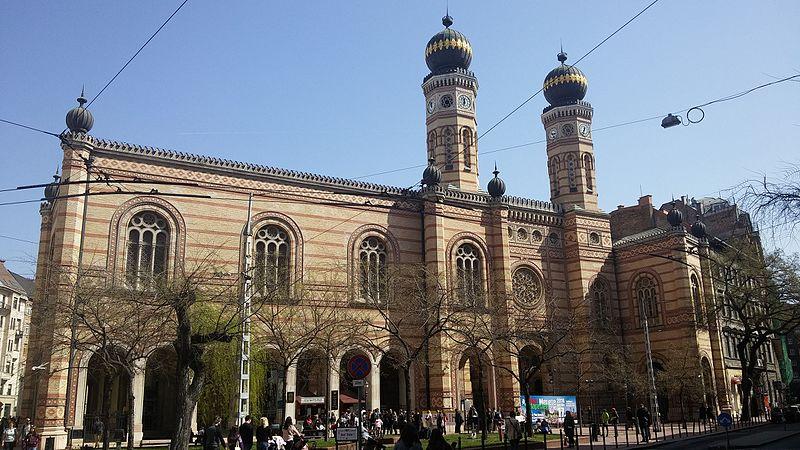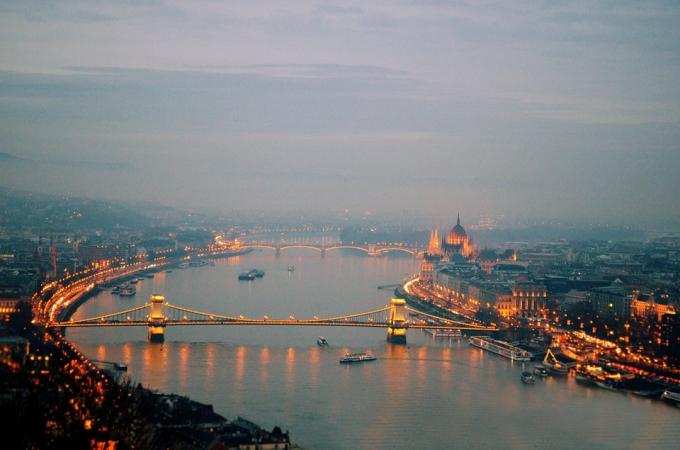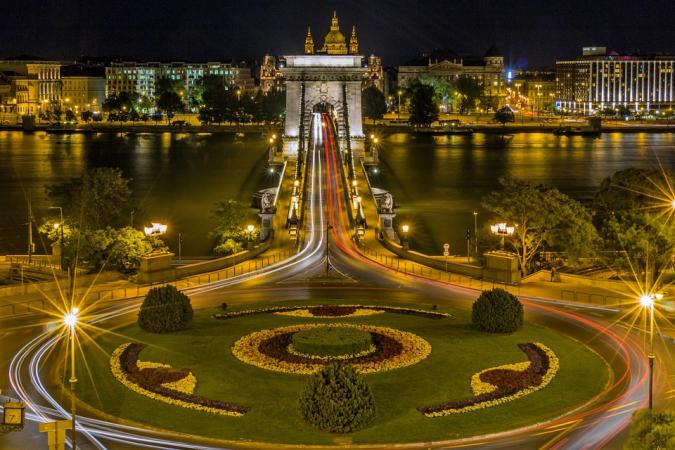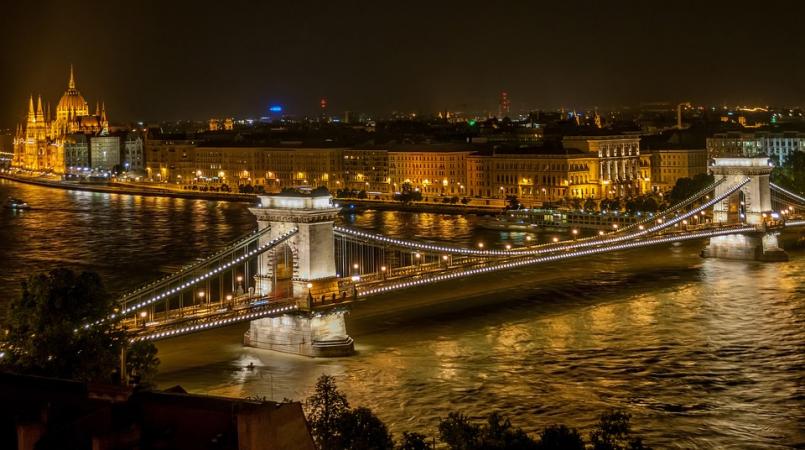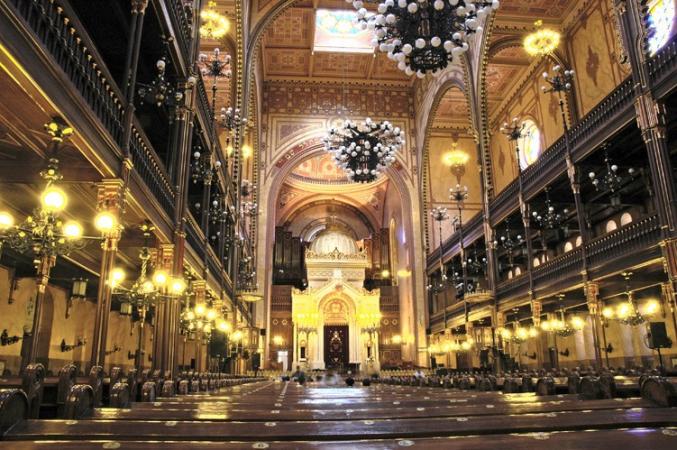Jewish heritage through authentic Jewish eyes
This is not just a slogan for us. Since we all come from local Jewish families and grew up during Communism, we can give you much more than pure facts learnt in history books. We can bring you closer to Jewish history, culture and religion through a more personal approach.We do not only offer you the below mentioned tours but also ready to work out a special programme based on your personal interest or request, e.g. root tours visiting the native towns and villages of your ancestors.
Jewish Heritage Tours:
General City Tours:
Jewish Budapest
This beautiful city is considered the most sophisticated of Central European capitals. Here you will find the third largest community of approximately 100,000 Jews in Europe. Jewish history dates back to Roman times, and Jews have always played an outstanding role in the city\'s economic, political and cultural life. Today, Budapest has many fine synagogues, kosher restaurants and Jewish schools. The unique Dohany Street Synagogue, the most impressive and biggest in Europe, stands next to the moving Holocaust Memorial, dedicated to over 600,000 Jews who perished during the Nazi reign of terror. The Jewish Museum has a wealth of artifacts and documents relating to Jewish history in Hungary.
Budapest is definitely one more pearl strung on the Danube necklace, a vibrant, cosmopolitan metropolis with rich Jewish history.
The half-day tour includes a visit to the old Jewish Quarter in the heart of Pest, featuring the impressive Dohany Street Synagogue (Europe\'s biggest), the Jewish Museum with its wealth of Judaica treasures, the unique Holocaust Memorial, the newly re-opened Rumbach Street Synagogue, the memorial statue dedicated to Carl Lutz (the Swiss Consul who saved thousand of Jews) and the beautifully restored Kazinczy Street Orthodox Synagogue.
The full-day tour includes the above programme of the half-day tour with an extension of visiting the recently opened \"Glass-house\". This is a remarkable place that, on the one hand, served as a shelter and hiding place for about 3,000 Jews saved by Carl Lutz, the Consul of Switzerland in late 1944 and, one the other hand, was also the center of the underground Zionist organization in Hungary
Eastern Hungary - following the footsteps of famous Hassidic Rabbis, Tzadikim of Hungary
Jews have lived in the Eastern region of the country from the beginning of the 18th century. Jews once played an important role in the production and transport of kosher wine. Tokaj and the neighboring villages are one of Europes most famous wine-producing areas and Jews were, for many centuries, very active in viticulture. Before the Holocaust, the Jewish communities, for instance, Mad, Tokaj, Bodrogkeresztur, Nagykallo and Satoraljaujhely maintained a rich spiritual life. From its earliest days, these communities leaned toward Hassidism. Indeed, much of the wine produced in the region was shipped north and east to Hassidic courts in Greater Poland.
The full-day tour leaves in the morning from Budapest, featuring the following programme:
Stop in Miskolc, the second biggest Hungarian city and a local Jewish center in Eastern Hungary. Visit the functioning 19th synagogue (designed by Ludwig Förster, the achitect of the Dohány Street Synagogue in Budapest) and take a walk in the beautifully restored old town.
Continue to Mad to see one of the finest surviving examples of Baroque synagogue architecture in Hungary. The Mad synagogue (built in 1795) is one of only four surviving synagogues of the period. Mad is exceptional because not only is the synagogue intact with all of its rich decoration, but the attached structure which once housed a yeshiva and the rabbis residence is also intact. The entire complex is dramatically sited, overlooking much of the town and the surrounding vineyards.
Stop in Tokaj, the capital of the most famous Hungarian wine region and former center of a prosperous Jewish community that lived in the area before the Holocaust. Visit the synagogue of Tokaj built in the late 19th century, the biggest and most impressive one in the region. Explore old wine cellars and taste some of the excellent kosher wines.
Continue to Satoraljaujhely, the town of Reb Ismach Moshe Teitelbaum who founded the Hassidic movement in Hungary in the early 19th century. Under the leadership of Rabbi Moshe Teitelbaum, a Hassidic center emerged in Satoraljaujhely, where he was the rabbi from 1808. He was famous for his knowledge as well as for his yeshiva. Many people pilgrimaged from great distances to see him. His son and descendents were Hassidic rabbis in Maramarossziget (Sighetu - Romania), and after his death his grandson became the rabbi of Satoraljaujhely. Visit the tomb of Reb Ismah Moshe in the old cemetery.
Western Hungary and Austria
The earliest traces of a Jewish community in Western Hungary can be found in Sopron and dates back to the 13th century. The Jewish merchants who settled down in Sopron probably came from Austria and Bavaria, like other settlers at that time. Sopron is known for its abundant wealth of historic buildings, nevertheless, the Old Synagogue (built around 1300) is one of the most interesting of them, a rare survival from medieval Jewish culture whose other material remains have almost entirely vanished.
In the Middle Ages, Eisentadt was probably the only town within the western Hungarian region now known as Burgenland (Austria) to have a fully developed Jewish community, with a synagogue, mikveh and rabbinate. It was the privilege of the big landowners and the smaller nobility to settle the Jews at that time. That is how the Seven Communities came about in the western part of Hungary, on the estate of the Esterhazy family. The Seven Communities were the first organizational unity of separate Jewish communities in Hungary. The communities of Eisenstadt (Kismarton), Mattersdorf (Nagymarton), Deutschkreutz (Sopronkeresztur), Frauenkirchen (Boldogasszony), Kittsee (Kopcseny), Lackenbach (Lakompak), and Kobersdorf (Kabold) belonged to the chief rabbinate of Eisenstadt, and they had their own inner administration; their privileges and culture made them prestigious and famous in Central and Eastern Europe.
The full-day tour includes the following programme:
Visit Sopron, one of the oldest and most charming cities in Hungary built on the ruins of a Roman town called Scarbantia. Explore the almost intact medieval inner city, including the former Jewish street (today called Uj utca-New Street) where a Jewish community lived until the beginning of the 16th century. Visit two unique synagogues built around 1300 that have been saved from complete oblivion.
Continue to Eisenstadt, the capital of Burgenland (Austria). Visit the Judengasse (Jewish Street) to see the Austrian Jewish Museum, in the house of Samson Wertheimer, the Chief Rabbi of Hungary in the late 17th and early 18th century. Visit Samson Wertheimer\'s private synagogue, the most extraordinary attraction of the Jewish Museum. This beautiful synagogue is one of the very few ones in Austria that were not destroyed by Nazi vandalism. Continue to explore the wonderful Baroque palace of the Eszterhazy family who granted protection for the local Jewish Community for centuries. Back to Budapest, arrival in the evening.
This tour can act as a sightseeing transfer from/to Vienna-Budapest.
Grand Budapest Tour (full day)
The city known as Budapest actually consists of three cities: Obuda, the oldest section, with Roman ruins on the Buda side of the Danube; Buda in the gently rolling hills on the western bank, famous for its historic Castle Hill and beautiful residential area; and vibrant Pest with its shopping, government and commercial districts on the flat plain of the eastern bank. United in 1873, Budapest is renowned as the location of one of the most beautiful World Heritage sites. Despite spectacular development, Budapest has preserved its old charm and magic. The visitor will find side by side the remains of fortresses and buildings from Roman times, still operating Turkish baths, Gothic and Baroque buildings, and the incredibly rich Art Nouveau architectural heritage. It is a city where the pleasing harmony of different architectural styles and superb structures, the cafés, baths, the food and culture, combined with legendary hospitality blend into an unforgettable experience for visitors.
Our tour covers the major highlights of the city, showing the grandeur and Old World charm of Budapest.
Visit both sides of the city: the colorful hills of Buda and the bustling businesslike boulevards of Pest. Explore the gorgeous House of Parliament, the elegant Andrassy Avenue, the impressive Heroes Square, the fascinating Market Hall, the medieval Castle District, the picturesque Fishermens Bastion and the Liberty Statue on Gellert Hill with its magnificent panoramic view of the city.
Danube Bend (full day)
This region, north of Budapest, has been the scene of important events in the history of Hungary. Breathtaking natural scenery, historical and artistic treasures and thriving folklore are the main attractions of the Danube Bend. Here the river is forced between the hills and turns to the South. From the hilltops magnificent landscape unfolds itself before you. This beautiful land, the center of medieval Hungary, still offers an abundance of historical artifacts and monuments.
The tour includes visiting Szentendre and Visegrad.
Szentendre with its colorful houses, narrow alleys, and dozens of museums and galleries, is the most frequently visited tourist center along the Danube. This Mediterranean-like town was the home of Serbs who fled from the Turks and settled here in the 14th-17th centuries. For the tourist who is looking for nostalgia, there are: various shops, cozy restaurants, old shop signs, the ancient buildings of the Main Square and a small synagogue recently opened. Szentendre is considered an outstanding center of art in Hungary. Besides exploring great art museums, visitors should not miss the unique Marzipan Museum featuring fantasies made of marzipan. Another curiosity is the Open-air Ethnographic Museum - Skanzen, which is 2 miles from the center of the town. It is the largest ethnographic collection in Hungary with 340 buildings in 10 sections. Folk monuments worth preserving have been transported here from all over the country where demonstrations of folk handicrafts are often held on the weekends in the summer.
In the Roman times, there had been a military camp in the present-day territory of Visegrad whose remains were used by the conquering Hungarians to build a fortified castle here in the 13th century. Throughout the medieval centuries, Visegrad developed into a major stronghold of Hungarian kings. The Hungarian coronation jewels were kept in the castle for a long time, and Visegrad became the capital of the country in the 14th century. Today visitors can discover the former royal castle, enjoying the fascinating view over the Danube Valley. It is also worth visiting the nearby the Solomon Tower built in the 13th century, which is among the oldest and most intact Romanesque style dwelling towers of Central Europe.
